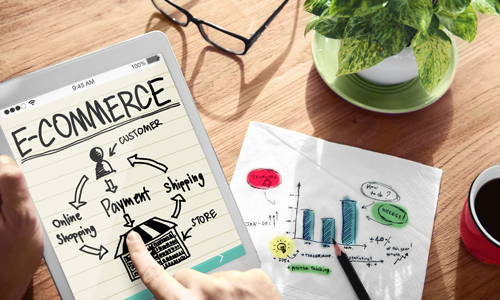
As more consumers shop using their smartphones, mobile marketers are continually working to improve the small-screen experience. Simply replicating the desktop experience won’t do. Beyond that, there are myriad ways in which designers can approach mobile devices. Let’s look at a few proven examples:
Catering to Different Navigation Styles
We don’t all use our mobile devices in the same way. Some folk are swipers: people who love to idly swipe through pictures and pages of content. It’s the most intuitive way of wielding a touchscreen, so designing your mobile content with swipers in mind will serve you well. Searchers, on the other hand, prefer to use a good old fashioned search field to find what they need. To cater to this navigation style, make sure your site search field is visible as soon as the page loads, with no need for scrolling. Make it bigger for your mobile site - the less people have to zoom in, the easier the experience.
Keep it Chunky
It’s not just the search field and button that should be enlarged. Everything on a mobile-optimized website should be big and obvious. To achieve maximum user-friendliness, you might have to sacrifice much of the content on your desktop homepage, especially if it’s dense with text and images. Lose everything but the bare essentials. Keep buttons big and flat, with highly contrasted color schemes. Again, design it so users don’t have to zoom or use their pinky finger to click on buttons.
Understand Smartphone Habits
Depending on your industry, it may make more sense to design an app (rather than a mobile site). If you’re in retail, think about how shoppers actually use mobile devices, rather than how you’d like them to. This requires facing some difficult truths, like the phenomenon of showrooming, when shoppers check out your products in store and then use their smartphones to see if they can get a better price elsewhere. To combat this, offer to match prices found online. As with everything else, this will be easier for bigger brands, but even if you end up selling some goods at a loss, it might be worth your while to treat it as a loss leader; price trumping in-store is a really effective way to ensure future brand loyalty, and those customers may return the favor by one day using your business over a competitor, even if the price point offered by your rival is more attractive. Approach this as an opportunity to upsell, rather than ignoring the reality.
Geo-Targeting
One of the newest toys in the mobile marketing strategy box, geo-location technology is changing the way people shop. Offering opt-in, geo-targeted special offers is an exciting way to provide bespoke value to consumers - and they love it!